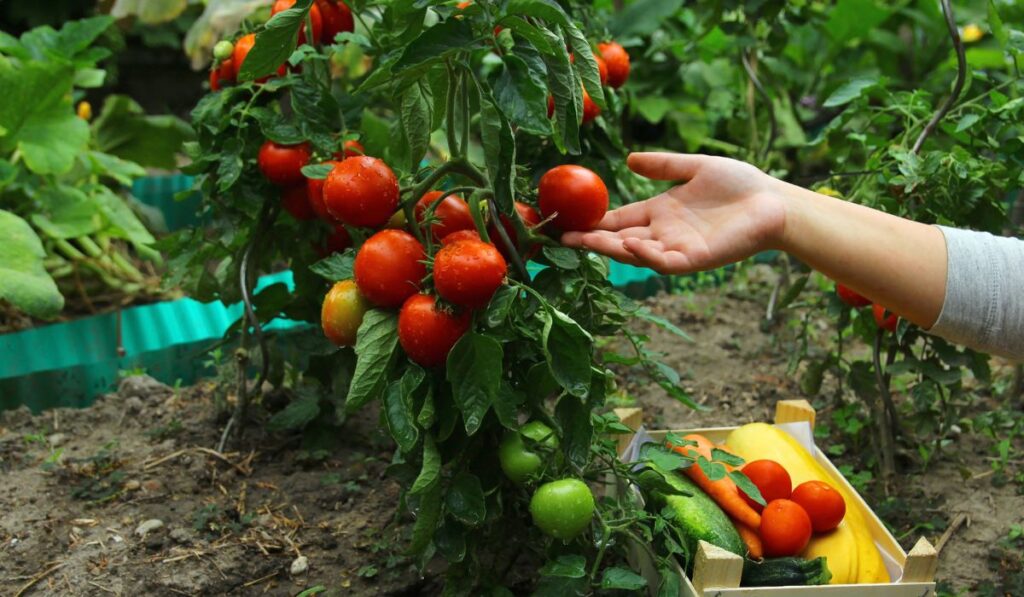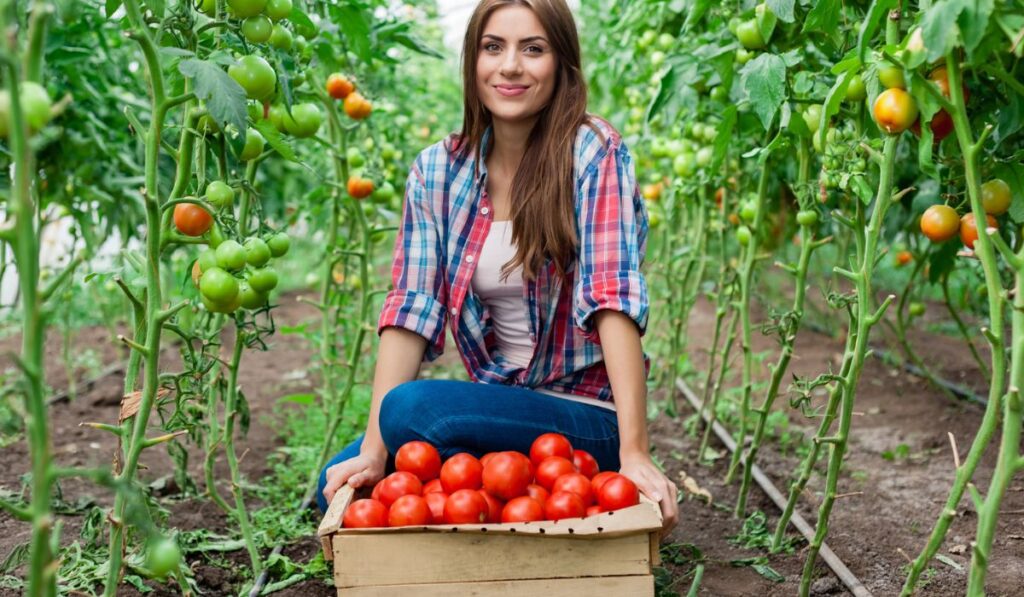Figuring out the best time to plant tomatoes can be a little tricky. Plant them too early, and you risk killing them or, at the very least, stunting them. But plant them too late, and you might not be able to get the most out of them.
You should plant tomatoes when it gets warm (late spring or early summer). Plant them after the last frost, but ensure they have enough time to mature before the first fall frost sets in. Use high-quality soil and make sure they get 6-8 hours of full sun.
The key to growing healthy and plump tomatoes is to determine the ideal conditions. So let’s look at the best season for planting tomatoes, the kind of soil you should preferably have, and the amount of sunlight they should get.
What Season is Best for Planting Tomatoes?

Tomatoes thrive well in warmth, so the ideal time to plant them is in early summer and late spring. However, if you live in zone 10, tomatoes should be planted in the fall or winter.
To determine the ideal time to plant the seeds, you should first figure out when you want to plant them outside and then work your way backward. But you need to wait until you pass your USDA Hardiness Zone’s last expected frost date.
The ideal nighttime temperature for tomatoes is above 50°F, while the best soil temperature is around 60°F. If you don’t have a soil thermometer, stick your finger a few inches deep into the soil. The soil is not warm enough if you can comfortably keep it there for a minute.
Apart from temperature and sufficient sunshine, you also need to look at the days to maturity. Some varieties take quite some time to grow, and it’s vital to ensure that they get plenty of warm days to produce fruit before fall frosts do any damage.
To determine the ideal planting window (based on your growing zone), you can find the days to maturity at the back of the seed packet.
So first, find out your region’s first expected frost date, then count backward using the days to maturity present on the packet. This will give you a rough idea of when to plant your tomatoes.
When Should You Plant Seeds Indoors?
Different people have different opinions, but in general, you should start the seeds indoors roughly 6-8 weeks before transplanting them outside.
However, some people begin even 12 weeks before, so their seedlings have sufficient time to grow.
How early you should start depends on the variety of tomatoes and the climate of your growing space.
Seedlings can germinate within six weeks in a humid and warm space with sufficient light. But if you don’t have much space or the growing season is very short, it’s better to start early.
When Should You Plant Tomatoes in a Greenhouse?
In a greenhouse, tomato seeds are best sown from the end of February to around mid-March. And they’re ready to be planted in larger pots in late April to early May.
Meanwhile, if you have a heated house, you can sow seeds as early as January and plant them in large pots in late February to early March to have a May-June crop.
What Happens if You Plant Your Tomatoes Too Early?
As mentioned earlier, tomatoes thrive in warm weather, and if you plant them too early, there’s a high chance that they might die.
And if somehow early transplants survive through frosty nights, they might have stunted growth. Plus, struggling plants are highly susceptible to diseases and pests.
What Type of Soil is Best for Growing Tomatoes?
Tomatoes take up the most nutrients when the soil pH is around 6.2 to 6.8. They also need a continuous supply of both minor and major plant nutrients. You can improve the planting area by mixing high-quality garden soil with the existing topsoil.
To provide the necessary nutrients, mix any continuous-release fertilizer that contains calcium into the soil when preparing the planting holes. Then, add it in the growing season as well, according to the directions on the label. Doing so will protect the tomatoes from blossom end rot.
You should also add around 3-4 inches of compost to provide other minor nutrients the plant needs. Compost can also hold fertilizer and moisture in the soil until the plants need it.
The plants should also have enough space to grow. For example, if you have indeterminate long-vined varieties, make sure you plant them 3 feet apart, while determinate plants can be planted 2 feet apart.
If you’re growing the tomato in containers, you’ll need an 18-inch pot for determinate varieties and a 24-inch pot for indeterminate varieties. For the best growth, make sure you fill these containers with a premium potting mix, such as this one from Burpee (on Amazon).
How Much Sunlight Do Tomatoes Need?
Plants need both warm temperatures and sufficient sunshine to grow healthy and plump. So before you plant them, ensure the sun is high enough for most of the day so that the plant site receives at least 6 to 8 hours of full sun.
The right amount of sun brings out the best flavors in tomatoes. However, if you live somewhere with a scorching climate, ensure you provide your plant with some shade in the afternoon to protect it on those scorching days.
How to Harvest Tomatoes

As tomatoes become ripe, they go from a vibrant green color to a somewhat lighter color with faint yellow or pink blushing. These mature green tomatoes (commonly referred to as breakers) can be picked, used in salsas, or served as appetizers.
As the fruits ripen, their flavors become more complex and enjoyable, so it’s better to wait a bit. Different varieties have different signs of ripeness, but perfectly ripe tomatoes generally have a deep color and feel firm when squeezed.
You can store picked tomatoes either indoors at room temperature or outdoors in a shady place. Avoid refrigerating tomatoes since temperatures below 55° can break down their flavor compounds. And if you have bumper crops, you can freeze, dry, or use them for future use.
